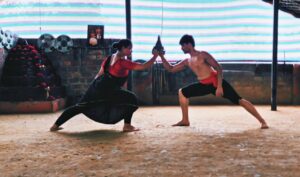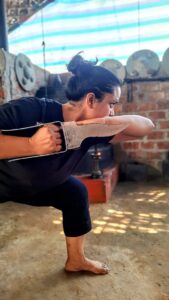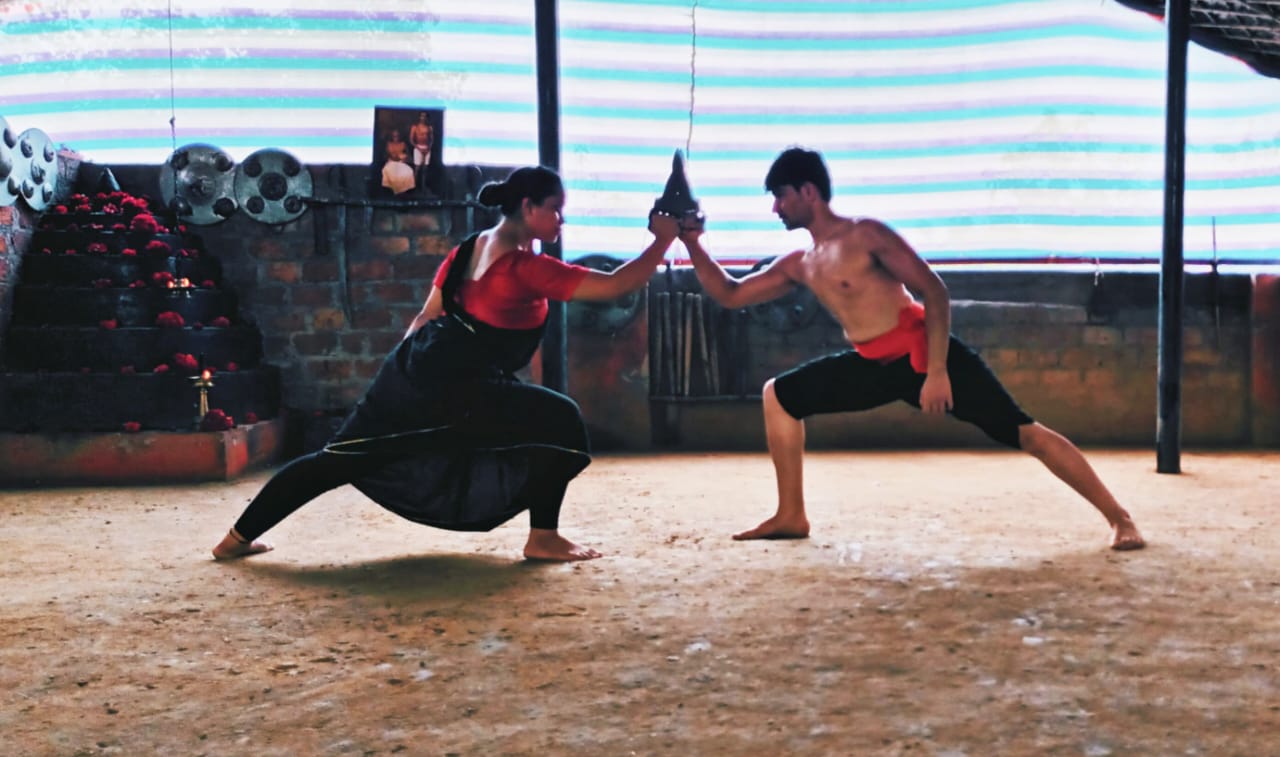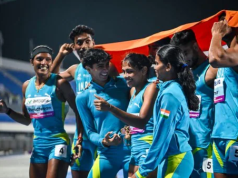“My story is not a story of success but a story of survival through a storm that I thought would never end.”
It was a time of turbulence for Kajal Srivastava. A UPSC aspirant, Kajal was unable to crack the examination for the sixth time and she was in an extreme state of depression. The hardest part was that her self-confidence hit such a low, that she lost all trust and belief in herself.
At this time, an Indian art form, whose origin dates back to the 3rd century BC, lifted Kajal out of her despair and gave her the courage to stand up for herself.
 KALARIPAYATTU
KALARIPAYATTU
Kalaripayattu is an ancient Indian art of warfare that is believed to be crafted by Lord Parashuram from the movements of animals in their natural habitat. Their survival instincts, vigilance and defiance were put together in human movements that could keep complete control over mind and body.
Kalaripayattu is recognised as the oldest surviving martial art in India which was taught by Parashuram to the original settlers of Kerala, shortly after bringing the Malabar region up from the ocean floor. It became an integral part of the socio-political system of medieval Kerala when its systematic training and strict rules of discipline evolved a fighter into a warrior.
The ballads of Malabar-Vadakkan Paattukal and Thekkan Pattukal– vividly described numerous battles among princely states and feuds among clans through the application of Kalaripayattu. The legends of Thacholi Othennan, Aromal Chekavar, Kannappa Chekavar and Unniyarcha- some of the greatest warriors of Kerala- were narrated so meticulously that those heroic tales continue to remain the epitome of maximum skill and extreme courage.
GURU-SHISHYA PARAMPARA
The teachers of Kalari, known as the Gurukkal, transferred the knowledge and rules of this martial art authentically to their students. Just like our classical music and dance forms, Kalaripayattu is conserved in its undiluted form through the Guru-Shishya Parampara. The magnificence lies in its integrity, where every movement targets the Jnana Chaksu (Eye of Wisdom) that starts with an awareness of the body and then gradually leads to the inner self.
KAJAL SRIVASTAVA- THE KALARI DISCIPLE
When Gurukkal Shinto Mathew travelled to Delhi to spread the art of Kalaripayattu in North India, Kajal Srivastava was one of the few people who was attracted towards it. The mysticism associated with the red-soiled ground having an altar with the presiding deity and a small lamp lit before the deity, set a sense of calmness in Kajal. As she started her Abhyaasa (practice), Kajal gradually became firm; with every moment, posture and technique she went on to achieve Sthirta (stability) in body and mind.
STAGES OF PROGRESS
Like every student, Kajal started with Maithari which is considered the first stage of Kalari. This stage is all about conditioning the body, to make the body ‘iron hard’ that eventually turns a person into a warrior. The flexibility and stability achieved in this stage not only teach the method of fighting but give courage and inner strength to face an uphill situation.
As Kajal’s impressive progress completely satisfied her Gurukkal, she was promoted to the next stage- Kolthari. It is the stage where a student gets the first weapon, but a wooden one. Kajal proudly remembers the elaborate ritual that took place while the Gurukkal handed over the weapon to her in front of the deity.
Kajal presently is in Angathari– the third stage of Kalari. Here she has been given the access to use metal weapons. With dagger, sword, knife etc. she is learning the variety of attacking methods. But simultaneously, her defense system has become so strong that her body itself is like a ‘weapon’ now that can sustain any attack or injury.
It is after passing the above three stages, the students enter the last stage of Kalari named as Verumkai. It is that stage in which practitioners, who have achieved discipline and accuracy in the earlier stages, are taught the techniques to oppose an enemy with bare hands. The techniques to evade, defend, hit, strike, lift and throw are taught sequentially.
TAVASI- THE COURAGE
 Though there is some time for Kajal to enter into the fourth stage, still she has been in the process of creating awareness, removing apprehensions and generating interest among people about Kalaripayattu. Her initiation of Tavasi is referred to as a movement through which Kalaripayattu is explored as a way of social empowerment. The integration of body, mind and soul generates an extreme courage that can fight against inequality based on gender, social and economic status, privileges and taboos.
Though there is some time for Kajal to enter into the fourth stage, still she has been in the process of creating awareness, removing apprehensions and generating interest among people about Kalaripayattu. Her initiation of Tavasi is referred to as a movement through which Kalaripayattu is explored as a way of social empowerment. The integration of body, mind and soul generates an extreme courage that can fight against inequality based on gender, social and economic status, privileges and taboos.
Under the aegis of Tavasi, Kajal Srivastava has been taking workshops to spread the uniqueness and authenticity of Kalari among children, youth, women and corporate. She visions a brave and resilient society where every individual has the courage to react and respond and can desire a life he/she truly deserves.
Kajal is also happy that Kalaripayattu has been included in the Khelo India Youth Games under indigenous sport category. She believes this to be the nascent stage for Kalari that eventually will make way to the other multi-disciplinary sporting actions. There are sporting federations as well that organise championships and tournaments. All these efforts will definitely bear fruit and make this martial art a truly inspirational form for both practitioners and sportsperson.




